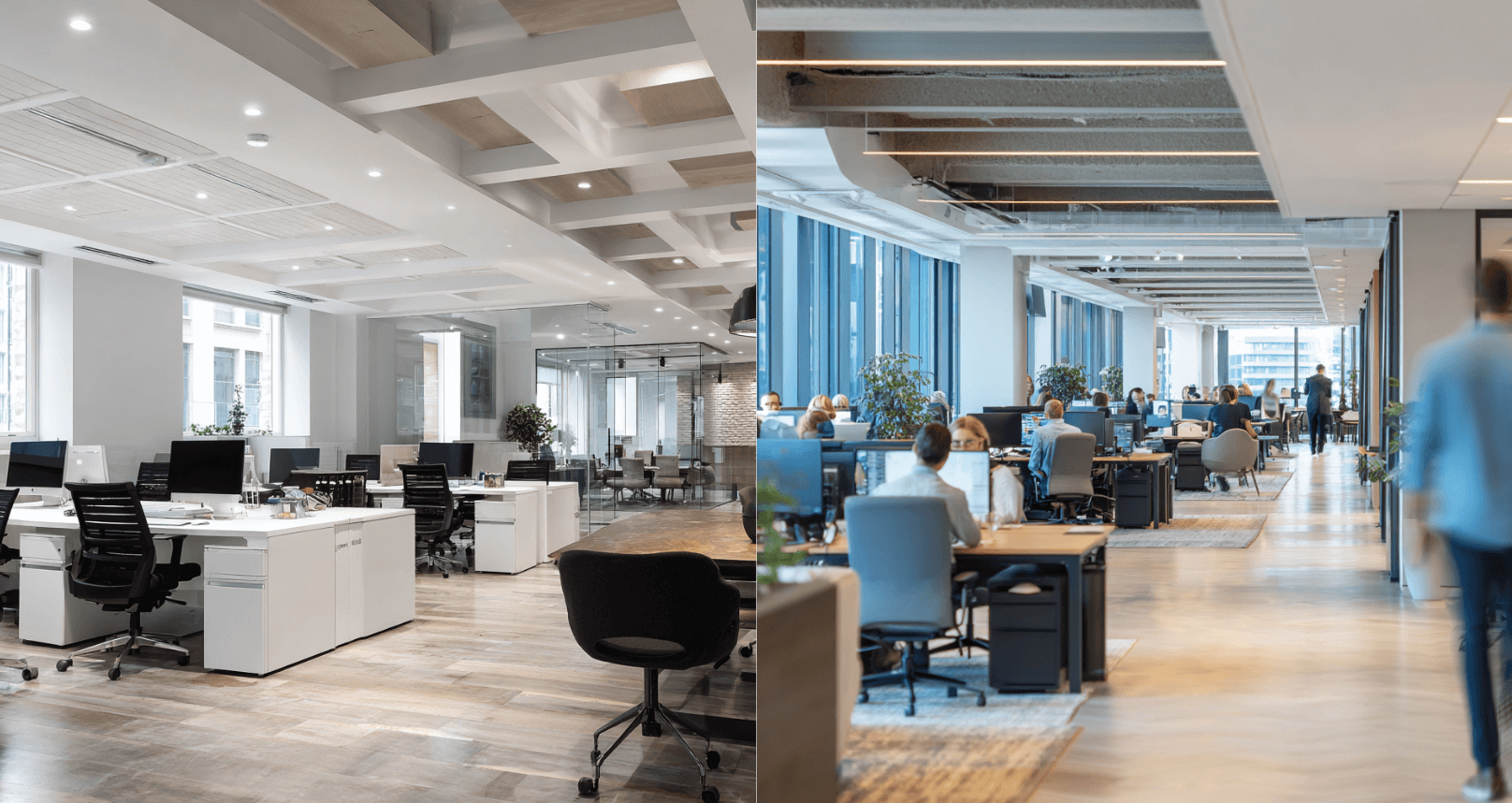We need to redefine "flexible" space
To understand workplaces of the future, we need to redefine "flexibility."

To understand workplaces of the future, we need to redefine "flexibility."
In a recent study, JLL announced a staggering statistic: 30% of all office space will be flexible by 2030, up from 5% today. The study defines flexible space as “coworking space, incubators and other short-term space options.” The term “flexible” applies to the lack of a long-term lease; the short-term agreements coworking space or incubators afford.
But “flexibility” shouldn’t just refer to the length of a lease or new options of where to work. Flexibility comes from the 15 century Latin word “flexibilis;” "that may be bent, pliant, or yielding.” The concept of flexibility is to bend without breaking, to adjust appropriately in the face of change.
The concept of flexibility is a powerful one that can be used to understand how the nature of work, employee experience, and workplace design are all changing in a time of volatility.
1. Flexibility of location
“We’re no longer tethered to a desk through cords and cables,” explains Kylie Roth, Knoll’s Senior Director of Workplace Research. Workers have the flexibility to move to any environment and still get work done. Forty-three percent of employed Americans occasionally work remotely. Thirty-seven percent of knowledge workers come into the office fewer than five days a week.
2. Flexibility of environments
In response to the highly covered Harvard study on open offices, workplace strategist Kate Wieczorek argued, “Workplaces with a variety of spaces, both enclosed and open, shared and individual, give employees and departments the ability to choose the space that suits them best.” Open offices fail when they are the only option, choiceless offices.
3. Flexibility of design
The digital world is based on iterative design. There is a constant feedback loop between developers and users with “A/B testing,” isolating one feature and comparing it to another. Andrew Farah, CEO of Density, believes the physical world is finally catching up. “Why AB test a website and not AB test a space? Why spend all this capital and then not measure the performance of the asset?” Density is aimed at data-driven workplace teams who are using data to validate their workplace design.
4. Flexibility of ownership
Airbnb, Uber, and Wework have all seen explosive growth by providing users with access to spaces or places they need in a convenient way. We’ve traded ownership of a car, a home away, or even a desk in favor of access to what we need when we need it. This theme is a key driver for workplace changes today, and will only become more prominent with the influx of mobile apps in the workplace.
5. Flexibility of experience
There isn’t a singular “workplace experience,” every worker has different needs. Workplace teams at companies like Atlassian see their role as anticipating the needs of different employees in a thoughtful way. Atlassian adjusted all their rooms to be accessible for employees who use wheelchairs, going beyond the standard ADA requirements. They provide Mother’s rooms for nursing in beautiful rooms with views. Workplace experience works when it respects experiences of all employees. To learn more about Atlassian’s workplace, view this video:
Key Takeaways

DisruptCRE founder shares how corporate real estate is changing
Companies are moving employees from underutilized offices into "space as a service” options with utilization data.
Watch now
Half of offices are empty but you still can’t find a meeting room
Employees waste up to 30 minutes a day looking for a meeting room to meet in workplaces.
Read moreMost recent

Space waste: The industry’s naughty and nice list
Our sensors spilled the beans: What industry is winning, who's wasting and who's hogging your office real estate.
.png)
Improve your occupancy sensor RFP with our best practice guide
Discover essential questions to simplify your occupancy sensor RFP process and confidently choose the right vendor.

Does RTO actually work? A webinar debate with the data
Density’s RTO data sparks debate between a pro-office CEO and a remote-friendly workplace strategist.

A workplace love story: Phone booth meets sensor
Phone booths are booming—and occupancy sensors help companies manage and measure them with ease.
Explore other Density Products
Atlas for Workplace
Insights for the workplace that help you cut costs and deliver better spaces.
Learn more